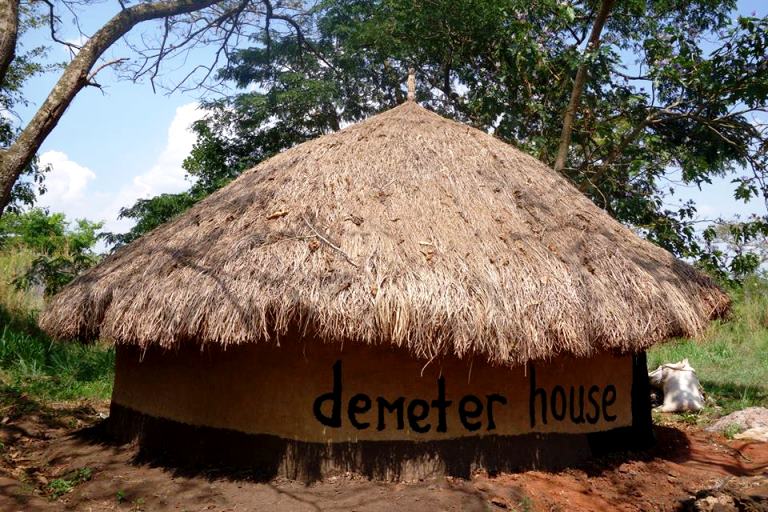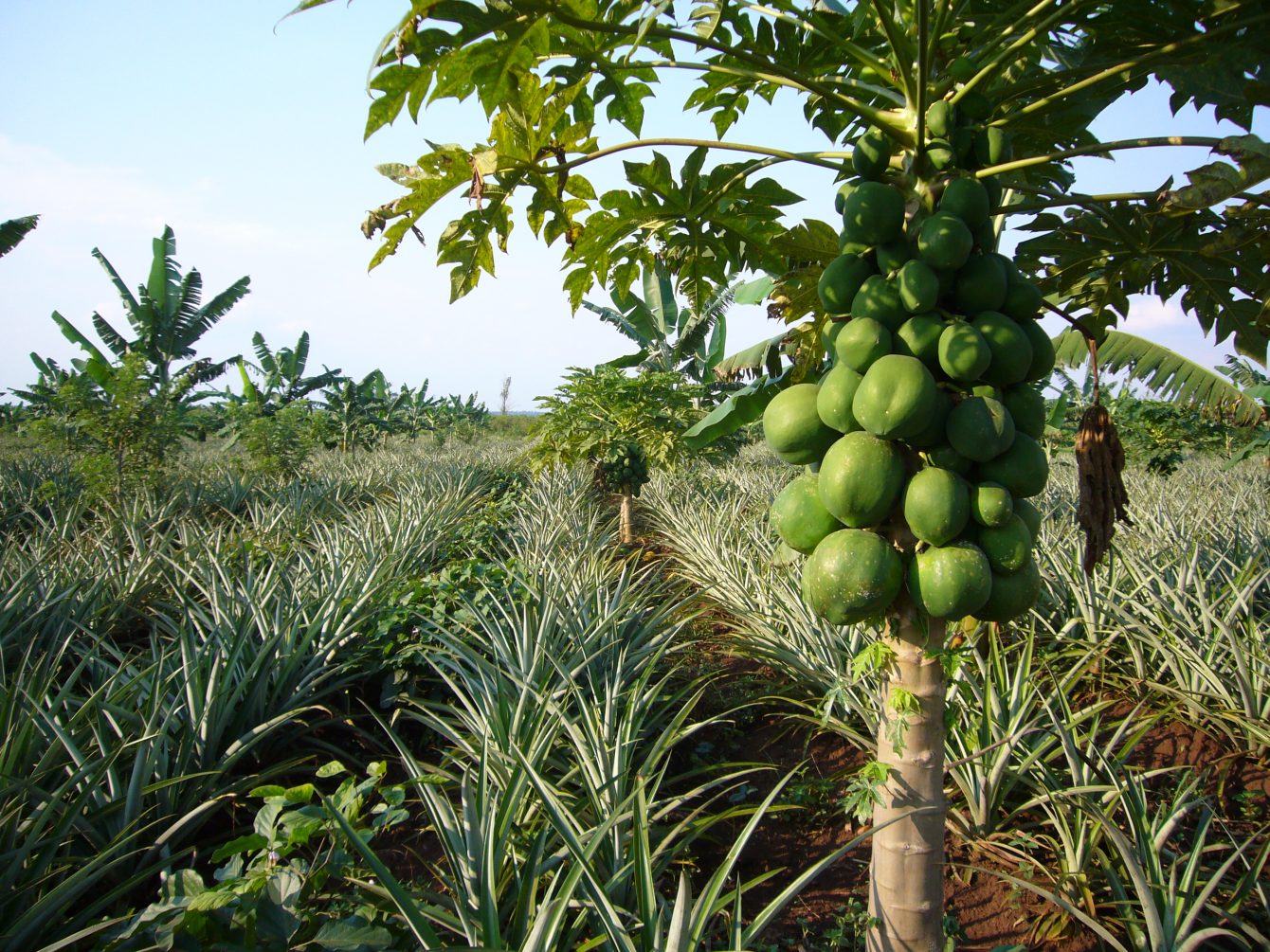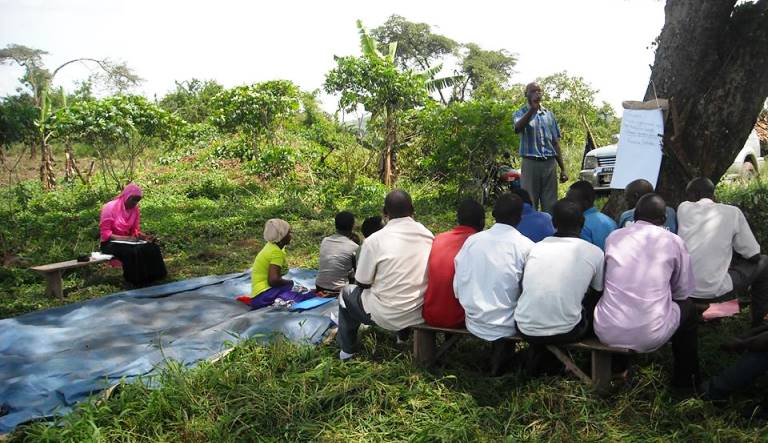Biodynamic Training
Bio Dynamic training takes place at Kyampisi Farm, and is meant to equip all members with the concepts of biodynamic farming. It gives a refresher training, as well as training all new staff about bio dynamic farming.
COMPARISON BETWEEN DEMETER AND BIODYNAMIC FARMING
- Biodynamic farming is the advanced form of organic agriculture, while Demeter are products which come from biodynamic farming, or a brand name for products from biodynamic farming.
- Biodynamic farming is harmonizing nature to improve on the quality of agricultural produce while Demeter is a certification attained after practicing biodynamic farming.
 Bio dynamic farming involves the use of preparations as named below:
Bio dynamic farming involves the use of preparations as named below:
500 (horn manure), 501 (silica), 502 (yarrow), 503 (chamomille), 504 (stinging nettle), 505 (oak bark), 506 (dandelion), 507 (valerian), 508 (horsetail).
The cow horn manure preparation (500) and cowhirn silica preparations are indispensable for bio dynamic farming.
The cow horn manure preparation is made from cow manure and it helps establish a good relationship between plant and earth forces, It helps the plant to have deeper rooting system and It stimulates soil vitality. On bio dynamic farms , cow horns are filled with cow manure in late September or Early October and are buried in the earth where they are left to ferment for some months.
Procedure
- Put the horns in a cool shelter to be able to separate the horn bone from the hornskin, keep for atleast 5 days.
- Cut the length of the horn you want to use and remove the bone
- Put in shade for 2 to 3 days for it to dry well. Do not put under direct sunlight. this helps to preserve our forces.
- Isolate the lactating cows from the herd, but do not tether. Feed these cows on legumes and other pastures. Collect the dung from these cows, and check well to see that there is no soil and other impurities.
- Compact this dung well into the female cow horns. We use female cow horns because they are thick and strong, and their digestion system is connected to their horns and hooves.
- Select a place to bury your horns. The place should be cool, moist, wet, free from plants and not near the road.
- Dig a pit of 1 to 1.5 m deep in any shape you like. Depth /width depends on the number of horns you are haviing.
- While placing the horns in the pit, make sure the horn tips are facing upwards, and the horns should be in a slanting angle in order to enable easy running of water on them, and to avoid water entering into the horns.
- Mix the soil dug out of the pit with compost or fertile soils and bury/cover the horns in the pit with this.
- Leave it to stay 4 months in the pit. It should be buried during the wet season.
Note: If you feed the cows on legumes, you dont need too mix it. If not, then mix it well to see that it all looks soft and fresh.
You can get 500 which is already harvested and mix it in all compost preparations when in the box. You can a lso mix 50 g of 500 with 100 grams of cowpit preparations in 15 ltrs of water and spray.
500 can be kept for 2 years if good storage facilities are provided. It is spread late in the afternoon when plants and soil are breathing in.
Mix 50g of 500 in 15 litres of rain water/clean water. Stir for 1 hour in clockwise and anti clockwise movements and spray after stated time..
The cow horn Silica preparation (501) enhances the forces emanating from the cosmos and constellations so it should be sprayed on the days best suited to each particular type of plant.
Silica is a six-sided crystal clear stone. It is crushed into powder and mixed with a little clean warm water, then stuffed in a cow horn. The horn tip is placed in heaped sand for water to evaporate. The horns are buried into the ground in a dry season for six months.
Mix 1.5 g to 15 l of water per acre. Stir for one hour and spray very early in the morning on the leaves. This helps in the ripeness, sweetness, smell and taste of the fruit, it increases on the shelf life of the fruit and it helps to expose plants more to sunlight which is used in photosynthesis.
Preparation 502 ( YARROW) is made from yarrow blossoms fermented together with dear bladders over a period of six months in earth during wet seasons. it has a stimulating effect on the use of sulphur and potassium by plants in their growth.
Preparation 503 ( CHAMOMILE) is made from matricaria chamomilla. chamomile blossoms fermented together with small intestines of healthy animals ( cows) , again fermented over the wet seasons bedded in earth and contains a growth hormone which is a particular stimulant for the growth of yeast. .
No dead earth should be used in preparing, animal feed should be derived from fertile healthy soils and only healthy animals free from malnutrition , deficiency diseases and infections should be used
Preparation 504 ( NETTLE) is made from stinging nettle leaves and stems buried about two feet deep in humus earth is separated from the soil by a thin layer of pit moss. this undergoes fermentation of one year which produces a fine black-brown humus and breaks down the fibrous parts of the plant. mature plants should not be used.
Preparation 505 ( OAK BARK) is make from oak bark a wide tree buried together with the skulls of ruminants. the resulting humus is dark blackish brown. The tree can live for more than 1000 years and it selected because it can fight against fungi and make plants strong.
The preparation stimulates the resistance of plants to diseases and accumulates a tremendous amount of calcium in its bark during growth even when it grows in a soil very poor in calcium.
Procedure
- Cover the head of the animal in compost for 3 weeks in order to remove all the flesh softly. Do not boil the animal’s head to remove the flesh, but when buried in compost heap, all flesh will be completely removed leaving a clean skull.
- Soak or mix oak bark in cool water to moisten the oak bark, as well as bringing it back to life.Do not soak it in too much water, because while compacting it into the skull, some of the useful oak bark is lost in water flowing as a result of compacting.
- Compact it into the skull very well.
- Cover every hole on the skull and the skull itself so that oak bark doesn’t slip out with clay or wooden cork or soil.
- Bury the skull in a place where there is flowing water but not in a spring or well or borehole. Probably rain water collected from the rooftop.
- It takes 4 months in the ground before being harvested.
Preparation 506 ( DANDELION ) is made from dandelion combined with the mesentery of ruminants rich in glandular cells.
Preparation 507 ( VALERIAN) is the pressed out extract from Valerian blossoms. it is used in high dilution of 5-10 drops per 2 gallons , 7.5 litres of water as a spray over the base and cover of manure and compost heaps.
It is used a s a remedy for spastic nervous conditions, it attracts earthworms and stimulates their propagation and when used in green houses it stimulates assimilation and increases the colors of the flowers.
Preparation 508 ( HORSETAIL) also known as Equisetum Arvense is able to make fungi growing on plants return to their natural level than that of the soil.
Cow Pit Preparation
Requirements
- Eggshells from a local chicken or basalt rock
- Compost preparations, i.e. 502, 503, 504, 505, 506 and 507
- Cow dung
- A pit and mulching material/dry grass
Method
- Crush the egg shells into fine powder
- Cleano or remove any foreign material from the dung, even the dried one
- Mix the egg shells together with cow dung for 1 hour
- Dig a hole or pit of 1.5m-2m
- Put the egg shells and cowdung mixture in the pit
- Add all the compost preparations 502 – 507 with 504 in the middle. 507 (valerian) has to be sprinkled on the top either before or after covering it with dry grass. 504 (stinging nettle) is put in the middle because it has iron radiations which it adds to the compost.
- Cover the pit with dry grass for 4 months.
HOLISTIC PASTURE MANAGEMENT
Allan Savory described this concept as follows:
If you take many cows or buffalos to graze, make sure they eat up all the grass there, then move them to another place to look for pasture/grass. If plant leaves are eaten up, they try hard to grow more leaves so that they can be able to sustain themselves and in the process, the soil gets more nitrogen. The animals also help in trampling in of shaded leaves, seeds deep into the soil which encourages more plant growth and more varieties.
If trampling takes place, the water holding capacity is increased since shaded leaves will decompose in the soil. He recommended that animals should never graze on new shoots because the plant may die out.
GREEN MANURING
Green manuring refers to the growing of a green crop containing specific kind of plants – the green manure plants.
Green manuring protects the soil and provides a change of crop, leguminous plants are able to take in nitrogen from the atmosphere and transfer it to the soil.
Green manure should be cut and worked into the soil during planting time , this helps forces work downwards into the earth which aids decomposition processes in the soil
It is better to plant or practice mixed cropping for legumes for the soil to get all nutrients needed in plant growth.

